How Wide And Long Should A Wedding Aisle Be?
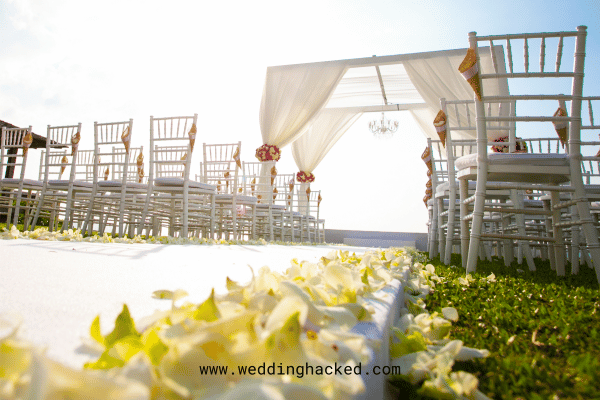
A wedding is a once in a lifetime celebration, and every detail matters when it comes to creating a memorable and enchanting experience. From choosing the right venue to selecting the perfect decor, every decision contributes to the overall ambiance of the event. One crucial element that often goes overlooked is how wide and long the wedding aisle should be. While it may seem like a small aspect, the size of the aisle can greatly impact the atmosphere and the overall flow of the ceremony. Let’s look into the factors to consider when determining the ideal width and length of a wedding aisle.
The Importance of the Wedding Aisle:
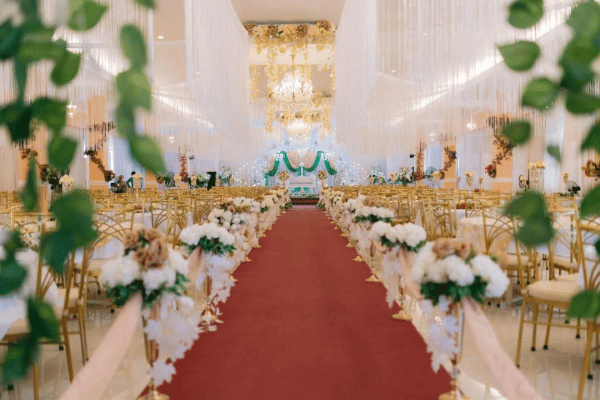
The wedding aisle serves as the pathway to eternal happiness, symbolizing the journey of the couple entering into a new chapter of their lives. It is the space where the bride takes her majestic walk, captivating everyone’s attention and setting the stage for the exchange of vows. Thus, it is crucial to strike the perfect balance between elegance and functionality when determining how long and wide the wedding aisle should be.
Factors When Determining How Long And Wide The Wedding Aisle Should Be
1. Venue Constraints
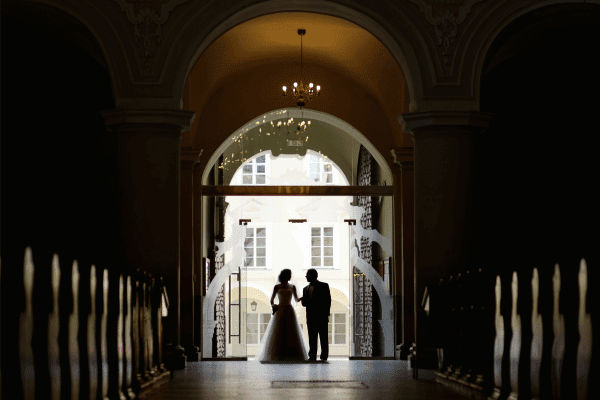
The first consideration when deciding the width and length of the wedding aisle is the venue itself. Different venues offer varied options, from traditional churches with narrow aisles to open outdoor spaces with endless possibilities. Evaluate the venue’s existing layout, architecture, and any physical constraints to determine the maximum aisle size that can be accommodated without hindering the overall flow of the ceremony.
2. Aesthetic Appeal
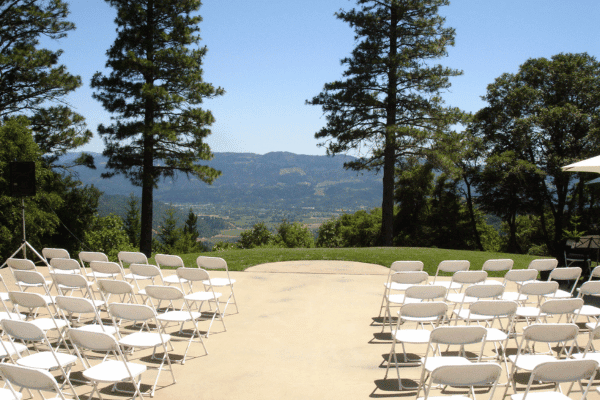
The width and length of the aisle should be in harmony with the overall theme and aesthetic of the wedding. For an intimate ceremony, a narrower aisle can create a cozy atmosphere, allowing guests to feel closer to the couple. On the other hand, a wider aisle can exude grandeur and sophistication, ideal for formal or extravagant weddings. Consider the decor, floral arrangements, and seating arrangements to create a cohesive visual experience.
3. Guest Comfort
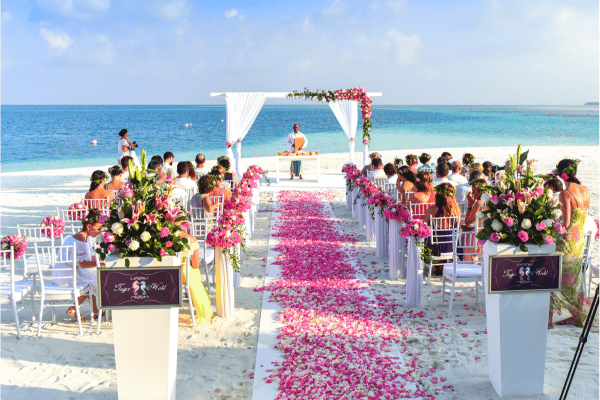
Ensuring guest comfort is essential when determining the size of the wedding aisle. It is crucial to strike a balance between creating an impressive visual impact and providing ample space for guests to comfortably observe and enjoy the ceremony. Consider the number of guests attending and their mobility needs, especially if there are elderly or disabled guests. Aisle width should allow easy passage for everyone, with enough room to avoid congestion and ensure a smooth entrance and exit.
4. Bride’s Attire and Confidence

The bride’s attire plays a significant role in determining the width of the wedding aisle. If the bride’s dress is voluminous or has a long train, a wider aisle is necessary to prevent any snagging or tripping hazards. Additionally, a bride’s confidence in walking down the aisle can also influence the width and length. Some brides may prefer a shorter aisle for a more intimate experience, while others may desire a longer path to soak in the moment and capture breathtaking photographs.
So, How Long And Wide Should The Wedding Aisle Be?
Ideal Width: The width of the wedding aisle primarily depends on the venue and the number of guests attending. As a general guideline, a minimum width of 4 to 5 feet (1.2 to 1.5 meters) is recommended to ensure sufficient space for the bride, the escort (if applicable), and the wedding party to walk comfortably. However, if the venue allows, widening the aisle to 6 to 8 feet (1.8 to 2.4 meters) can provide a more visually striking effect, especially for larger weddings or venues with grand architecture.
Ideal Length: The length of the wedding aisle should be determined by the venue’s layout and the desired visual impact. The length can vary and depends on whether the venue offers a traditional center aisle, a spiral pathway, or a uniquely shaped configuration. For venues with traditional center aisles, a length of 50 to 100 feet (15 to 30 meters) is common, allowing the bride ample time to make a captivating entrance while maintaining guests’ engagement. Outdoor venues may offer the flexibility to extend the aisle to accommodate a longer walk or provide a scenic backdrop for the ceremony.
Considerations for Outdoor Ceremonies:
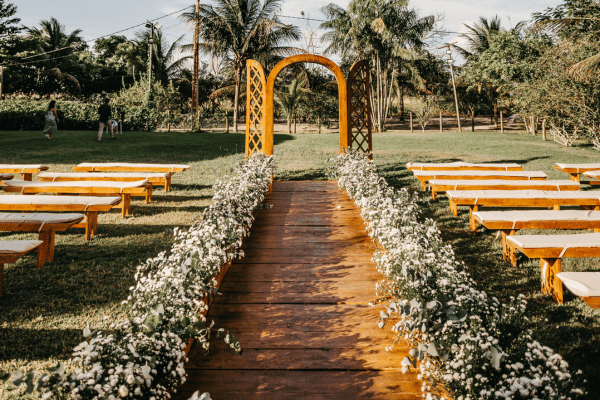
Outdoor weddings present an opportunity to create a customized aisle that seamlessly integrates with the surroundings. In such cases, the dimensions of the aisle are often influenced by the natural landscape. When choosing an outdoor ceremony location, consider the terrain, any obstacles, and the ability to create a level and stable pathway. The width of an outdoor aisle may also be influenced by the desired seating arrangement, ensuring guests have ample space to sit comfortably.
Conclusion:
The width and length of a wedding aisle play a significant role in creating a memorable and seamless ceremony experience. By considering venue constraints, aesthetic appeal, guest comfort, and the bride’s attire, it is possible to strike the perfect balance between elegance and functionality. Whether opting for a narrower, intimate aisle or a wider, grand pathway, the dimensions of the wedding aisle should reflect the couple’s vision and enhance the overall ambiance of the event. Remember, there is no one size fits all approach, and customization based on specific needs and preferences is key to creating a truly enchanting wedding ceremony.






